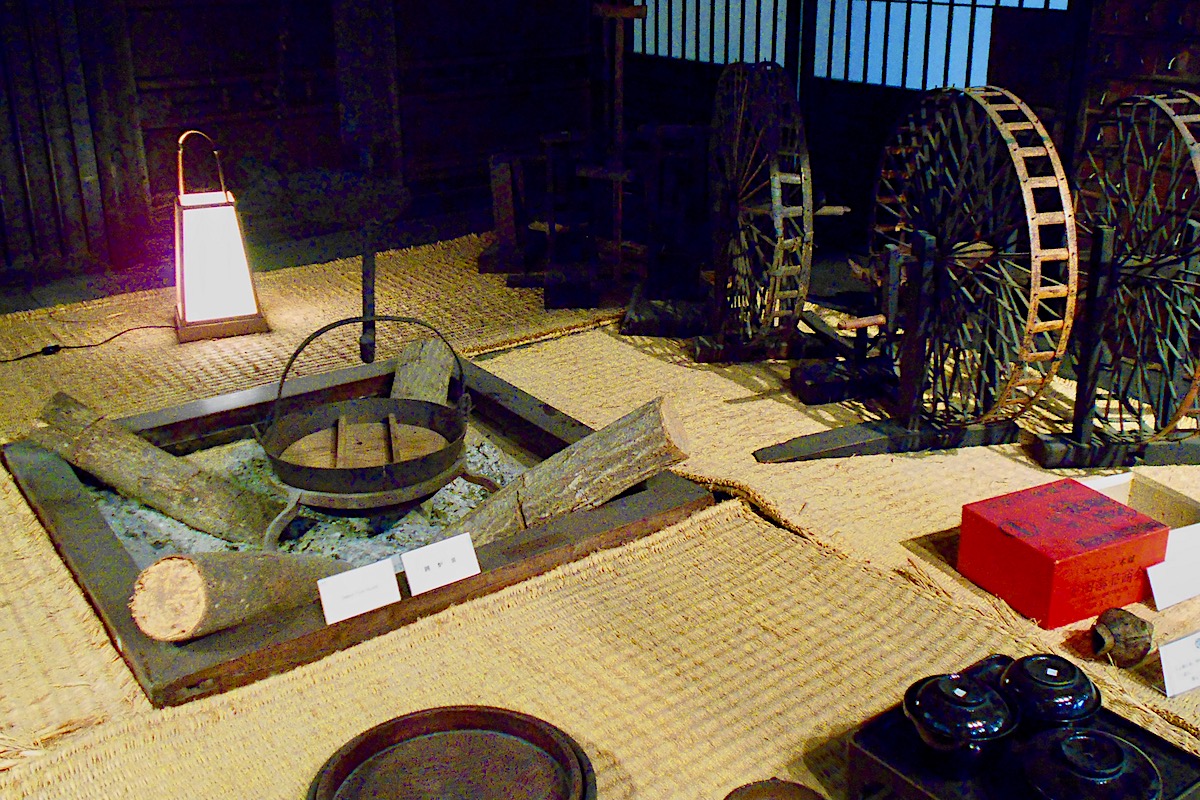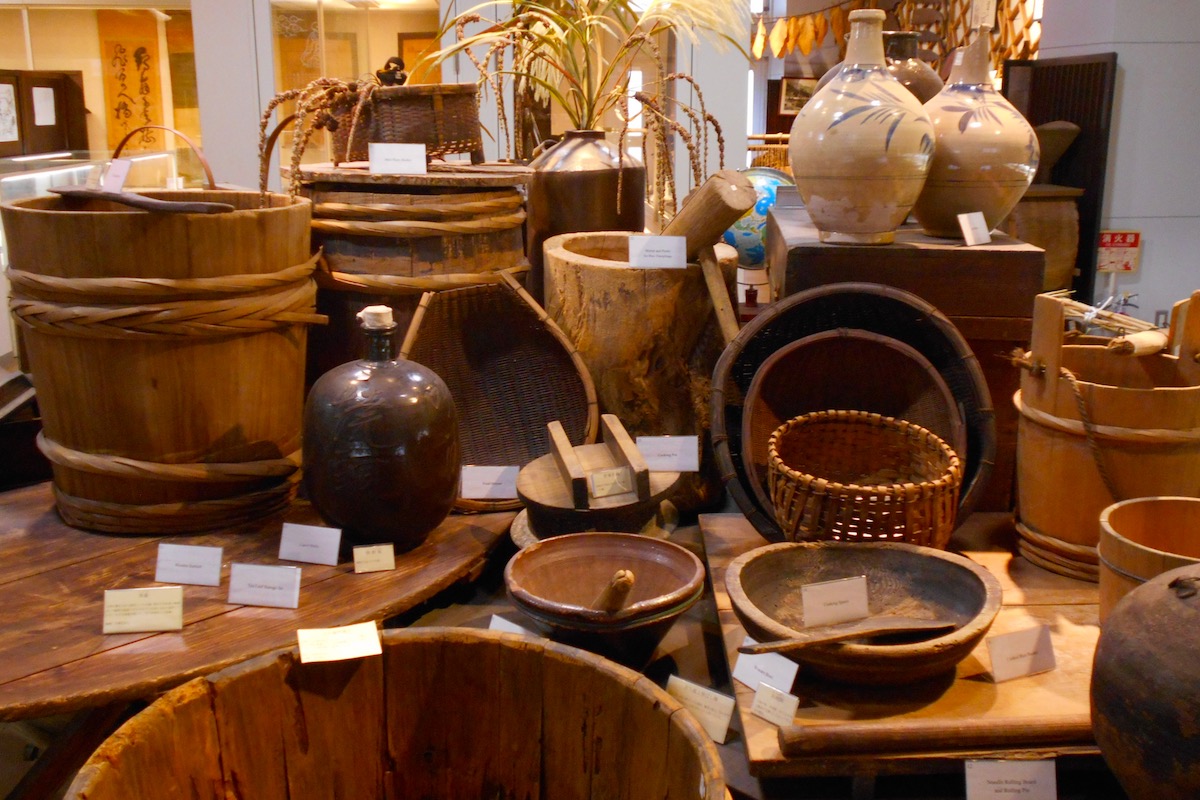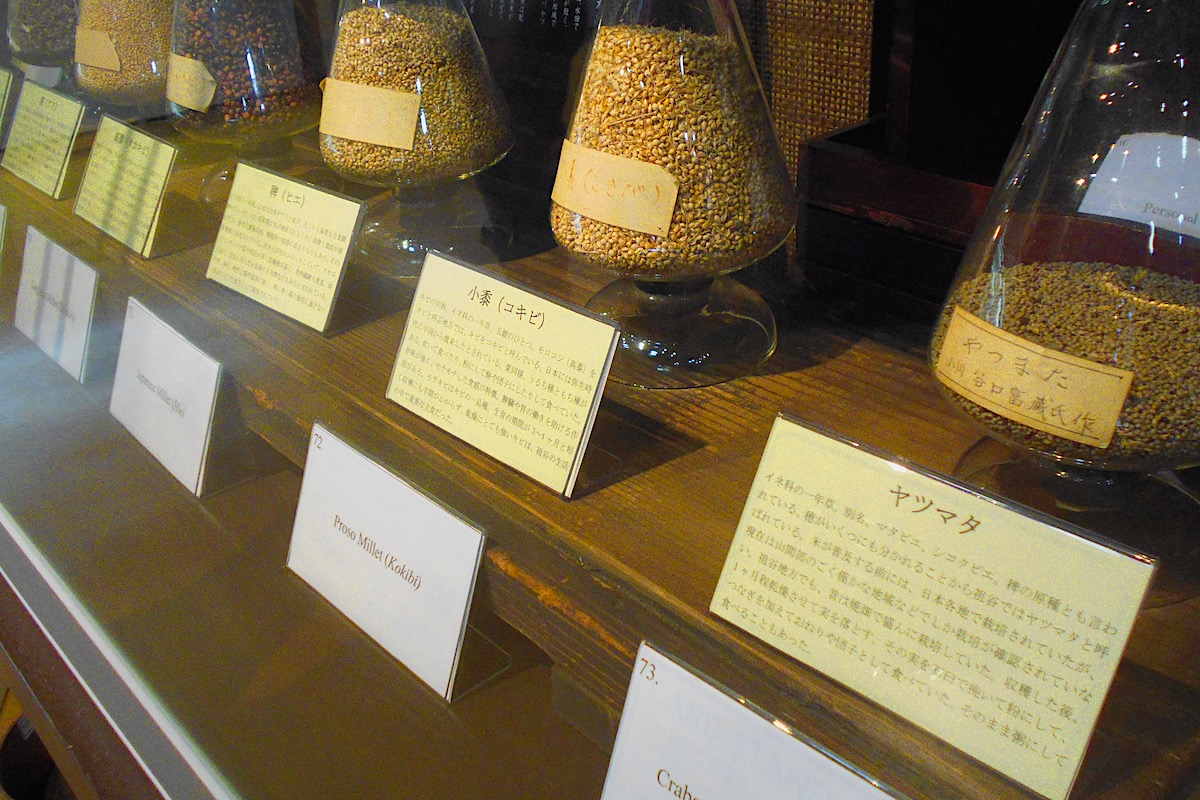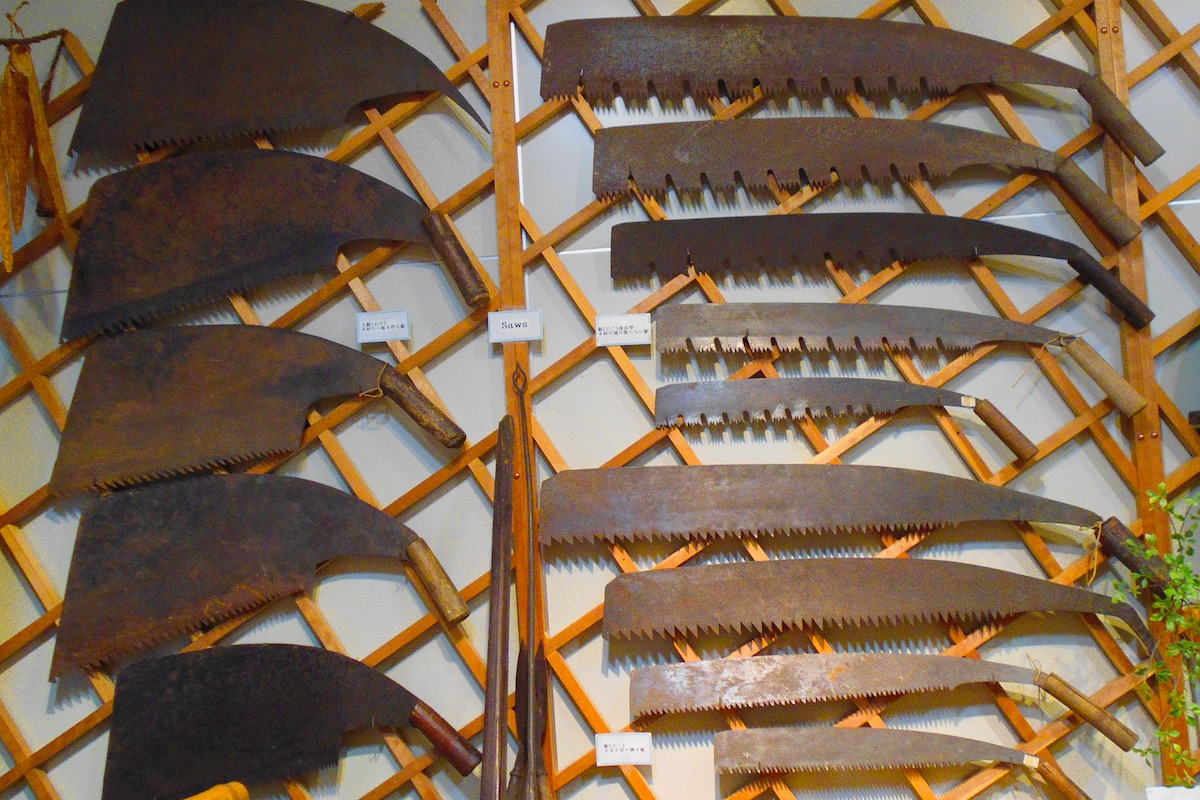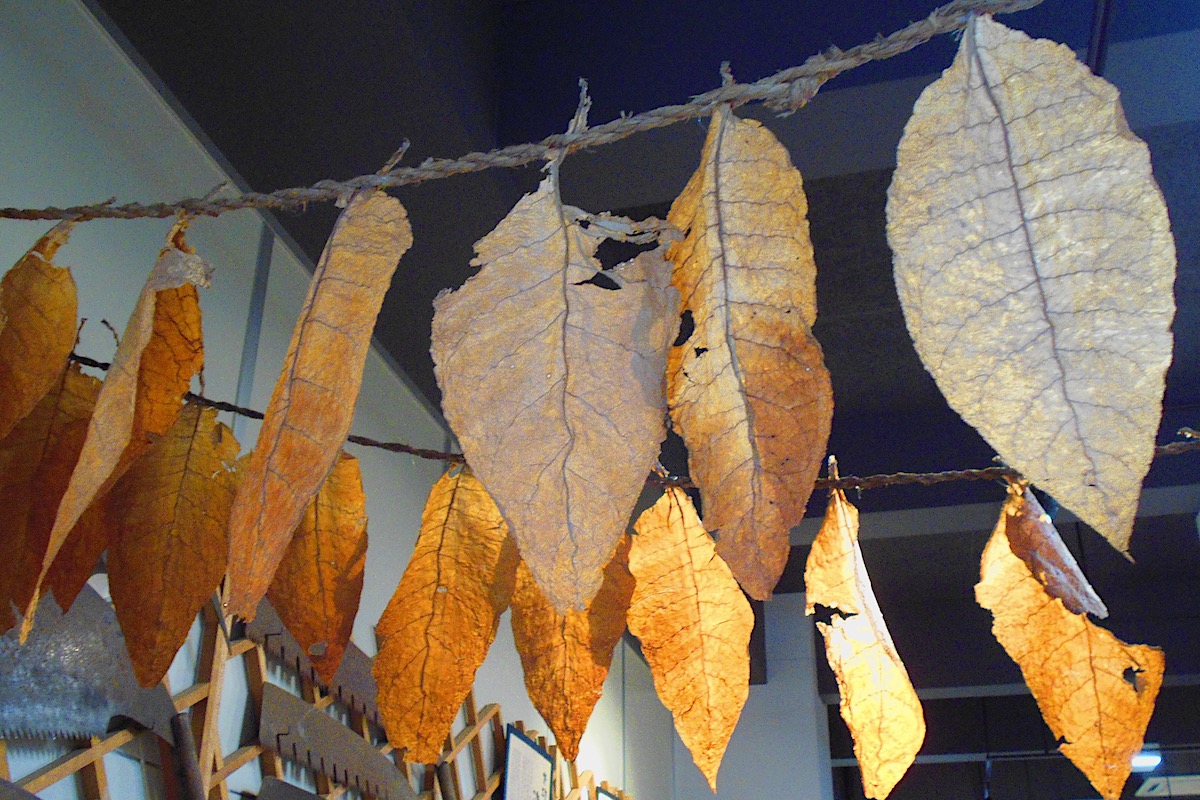Discovering Iya’s Past -Part 2 | The Higashi-Iya Museum of History and Folklore
2022.02.11
People have been living in Miyoshi City’s Iya Valley for hundreds of years, and over the centuries the residents have developed their own culture and traditions. The Higashi-Iya Museum of History and Folklore is a great place to learn about Iya’s rich and enduring heritage.
A Glimpse of the Past
As you first enter the Higashi-Iya Museum of History and Folklore, the first display is a re-creations of the interior of a traditional Iya Valley farmhouse.
The arrangement features an “irori” floor hearth, which is the center-point of old Iya homes, as well as various implements which would have been present for everyday life, including thread spinning wheels, lacquer-ware dishes, and a hand-powered stone mill used for making soba (buckwheat) flour.
The Sustenance of Iya People
Further along there are large displays showing various implements that were used for daily chores, such as buckets, baskets, and food storage vessels.
As explained in the bilingual descriptions, the people of Iya didn’t regularly eat much in the past rice since it was hard to cultivate in on the steep valley slopes, so millet was grown instead as Iya’s main staple crop.
Accordingly, various forms of millet grains are also on display.
A variety of traditional farming tools are also here, including an assortment of old-time threshers and grain processing machines.
Working in a Rugged and Remote Place
Being that Iya is located deep in the mountains, woodworking was always an important industry, so a vast assortment of archaic saws and lumbering equipment are on hand.
And perhaps one of the main income sources for the Iya people in the past was the cultivation of tobacco. A display is set up showing how the tobacco leaves would be hung to dry inside of the Iya farmhouses. Supposedly most homes grew tobacco, so it was common for there to be thousands of tobacco leaves strung up inside of every home.
Though growing and drying tobacco was a labor intensive process, it was one of the few cash crops which was worth being carried out of the valley over the high mountain passes.
In Part 3 we will find the museums offerings regarding the legends of the Iya Valley.
For more info about the museum and access details, check the IyaTime website:
https://www.iyatime.com/higashi-iya-museum-of-local-history-and-folklore
(Text & Photos by: Shaun Lamzy)
Related Posts
-
Exploring Oboke Gorge – Part 2 | A Place for Food, Fun… and Monsters?!
The thrilling cliffs of Oboke Gorge are formed by the mighty Yoshino River as it cuts its way throug
2023.03.21
-
Exploring Oboke Gorge – Part 1 | A Natural Wonder of Miyoshi City
The mighty Yoshino River flows across much of Shikoku, and as it cuts its way through the rugged mou
2023.03.20
-
Iya Kanko Ryokan – Part 3 | Inheriting the Tastes of the Iya Valley
Just a few minute walk from the famed Kazurabashi Vine Bridge, the Iya Kanko Ryokan has been welcomi
2023.03.19
-
Iya Kanko Ryokan – Part 2 | A Family-Run Business Where Life is a Juggle
The Kazurabashi Vine Bridge is one of the most renowned sights of the Iya Valley, and just a couple
2023.03.18
-
Iya Kanko Ryokan – Part 1 | A Traditional Inn near the Kazurabashi Vine Bridge
Acclaimed as one of Japan’s Three Unusual Bridges, the Kazurabashi Vine Bridge is one of the most fa
2023.03.17
-
The Shikoku “Yukigassen” Snowball Fight – Part 2 | The Heat of the Battle in Icy Conditions
The 19th annual “Yukigassen” Snowball Fight Tournament was held recently in the deep mountains of Mi
2023.02.19










